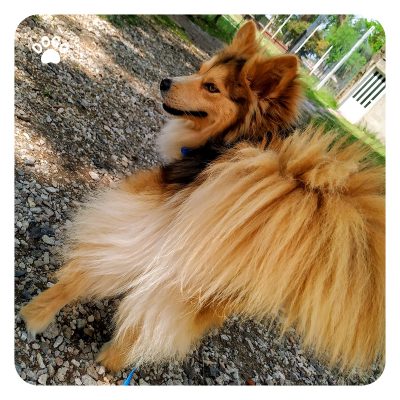We’ve all seen it before: the joyful sight of a dog wagging its tail. It’s a universal symbol of happiness, right? Well, not exactly. While tail wagging can certainly indicate a dog’s excitement or joy, it can also convey a variety of other emotions and messages. Understanding what a dog is trying to communicate through its tail wagging can offer valuable insights into its feelings and intentions. So, let’s delve into the fascinating world of canine communication and take a closer look at what it really means when a dog wags its tail.
Decoding the Tail Wag
When a dog wags its tail, it’s easy to assume that it’s simply expressing happiness or excitement. However, tail wagging is a much more nuanced form of communication than we might think. Dogs use their tails to convey a range of emotions, from joy and friendliness to anxiety and even aggression. The key to understanding a dog’s tail wag lies in observing the context and accompanying body language.
Reading the Context
Before jumping to conclusions about a dog’s tail wagging, it’s crucial to consider the context in which it’s occurring. For instance, a dog may wag its tail vigorously when greeting its owner or meeting a new friend at the park, signaling its happiness and eagerness to interact. On the other hand, a dog might also wag its tail nervously when feeling unsure or anxious in a particular situation, such as during a visit to the vet or when encountering a new and intimidating environment.
Interpreting Body Language
In addition to considering the context, it’s important to pay attention to the dog’s overall body language when interpreting its tail wag. A relaxed, loose tail wag often accompanies a happy and friendly demeanor, with the dog’s body relaxed and ears in a neutral position. Conversely, a stiff, high-tail wag with a tense body may signal agitation or aggression. By taking into account the dog’s entire body language, we can gain a more accurate understanding of what it’s trying to communicate through its tail movements.
Emotional Expression
Tail wagging reflects a dog’s emotional state and can serve as a window into its feelings. Dogs may wag their tails as a way of expressing joy, excitement, or anticipation, much like a human might smile or laugh when feeling happy. However, they may also wag their tails when feeling nervous, insecure, or threatened. By recognizing the nuances in a dog’s tail wag, we can better respond to its emotional needs and provide appropriate support.
Communication with Humans
Dogs use tail wagging not only to communicate with other dogs but also to interact with humans. When a dog wags its tail in the presence of people, it often seeks to convey its emotions and intentions. Understanding the meaning behind a dog’s tail wag can enhance our ability to connect with and care for our furry companions, fostering stronger bonds built on clear and empathetic communication.
Tail Wagging and Breed Variations
It’s worth noting that different breeds may exhibit unique tail-wagging behaviors. For example, some breeds have naturally shorter tails, making their wagging motions less pronounced and potentially more challenging to interpret. Additionally, certain breeds may have tail positions that are characteristic of their specific communication styles. By familiarizing ourselves with breed-specific traits, we can better understand and appreciate the diversity of tail-wagging expressions across different dogs.
In the end, a dog’s tail wag is far more than a simple display of happiness. It’s a complex form of communication that conveys a wide array of emotions and intentions. By observing a dog’s tail wag in conjunction with its context and body language, we can gain valuable insights into its state of mind and respond appropriately. So, the next time you see a dog wagging its tail, take a moment to consider the full picture of what it might be trying to tell you. Understanding our canine companions’ communication enriches our relationships with them and fosters a deeper appreciation for their unique ways of expressing themselves.[/fusion_text]



